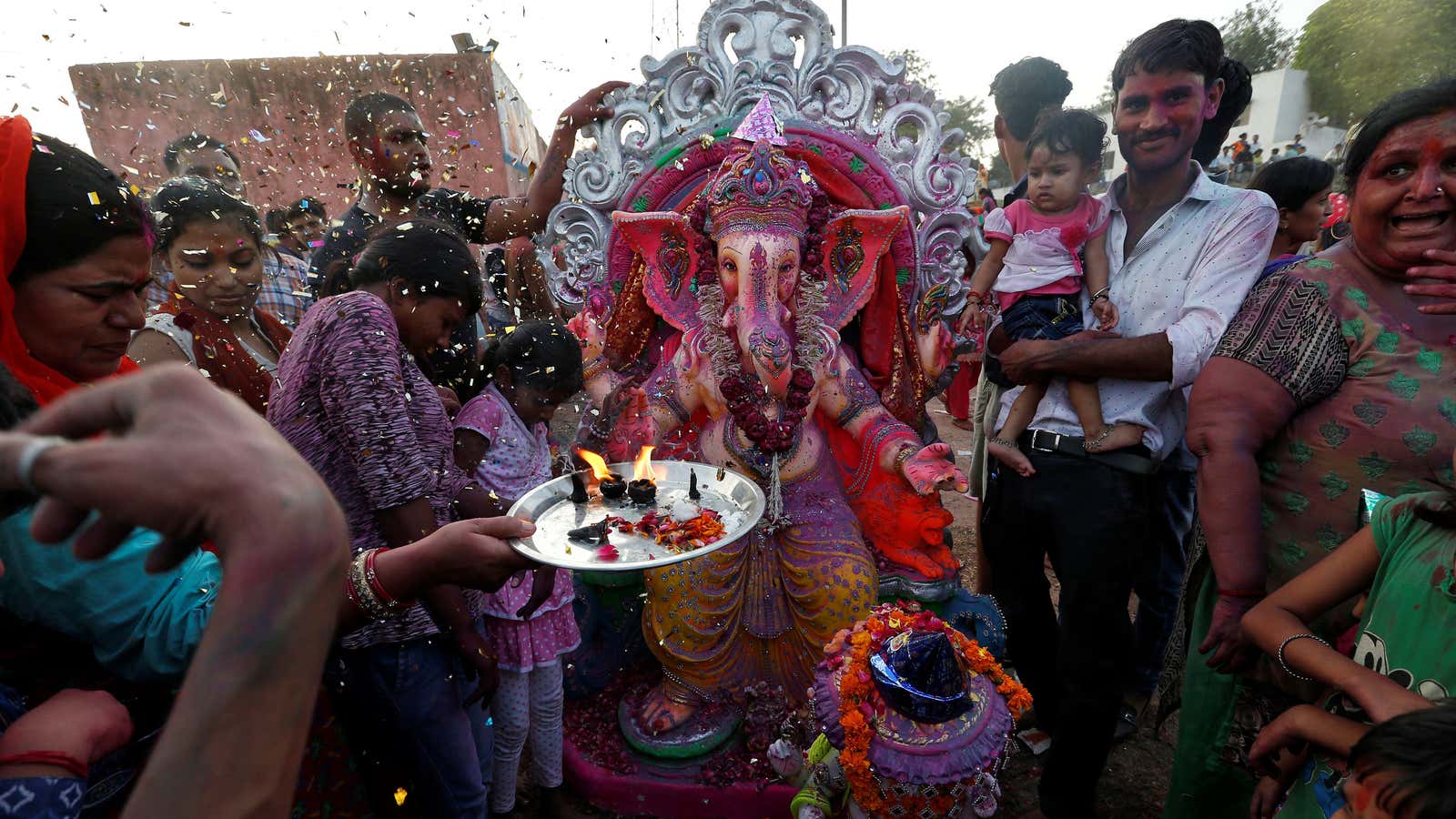Aarti is the quintessential Hindu religious ritual. Automation, for some time now, has given many Indians sleepless nights. So a coming together of these two says a lot about the world we live in.
During the ongoing Ganpati festival in India, Ahmedabad-based Patil Automation hit the idea of letting a robot perform the aarti for the elephant-headed god at its Pune facility. Primarily symbolising the removal of darkness, this ritual traditionally involves a priest or a devotee moving a lamp or blazing camphor in a circular pattern before a deity, accompanied by chants or hymns.
“It was an innovative idea to show that with Make In India, the country is moving ahead,” Ganesh, a worker in Patil Automation’s IT department, told Quartz. The robot was not supplanting humans; it was more of a “decoration,” he said, without revealing his surname.
In any case, Patil Automation is not the first to insert automation into religion.
While globally the chances of the clergy losing its role to automation is under 1%, according to willrobotstakemyjob.com, the threat is real. Over the last few years, a robot monk has spread Buddhist wisdom in a Chinese temple, a machine has performed relatively inexpensive funeral rites in Japan, and another has passed blessings in Germany.
In India, contraptions performing aarti and other key rituals have sprung up at private homes and public places. For some time now, online darshan (the site of a temple’s deity), mechanised preparation of prasad (offerings to the god), and adoption of solar energy have been common at places of worship. This is besides the computerisation of routine activities, including receiving donations.
However, aarti is connected directly to the very practice of religion. So its automation, naturally, evokes strong reactions.
“A robot doing puja (worship) is wrong…Unless someone is physically handicapped, there is no need for a robot,” said Mumbai-based freelance priest Santosh Rao.
Another freelance priest, while accepting that change was inevitable, sought to draw a line to keep the basics of religion intact. ”If the pillar shakes, the house will fall, no?” Dinesh Dave said. Technological advancement, he said, had always interfered with religion but it was up to humans to minimise it.
One upside of technology in religion is that it helps reach out to more people. Today, social media and digital marketing are being used to help raise awareness about traditions and associated celebrations. People are now able to send online greetings and place orders online for prasad even across continents. Organisation is made easier by sites like MuhurtMaza (my puja time), which lets devotees book priests for special occasions. And, as Rao suggested, robots could be a boon for the physically challenged.
Asked if automation is likely to increase in this sphere, Herman Tull, an expert in religious studies, especially with a focus on south Asia, compared robotic aarti to listening to bhajans (devotional songs) on the computer or on the radio. However, Tull, a visiting associate professor at Lafayette College, Pennsylvania, too, was categorical in saying that “it is not the real thing.”
“The performer performs it (aarti) not just by going through a series of rote motions…but by engaging mentally with the ritual or with the deity through the ritual. There may be an attitude of loving devotion, of joy in the god, or, of pure focus on the other-worldly,” Tull said. “The robot merely performs a physical act…and this really is not worship.”
Technology, Tull explained, helps in many ways but may not satisfy the human needs and fears of hundreds of thousands of years.
